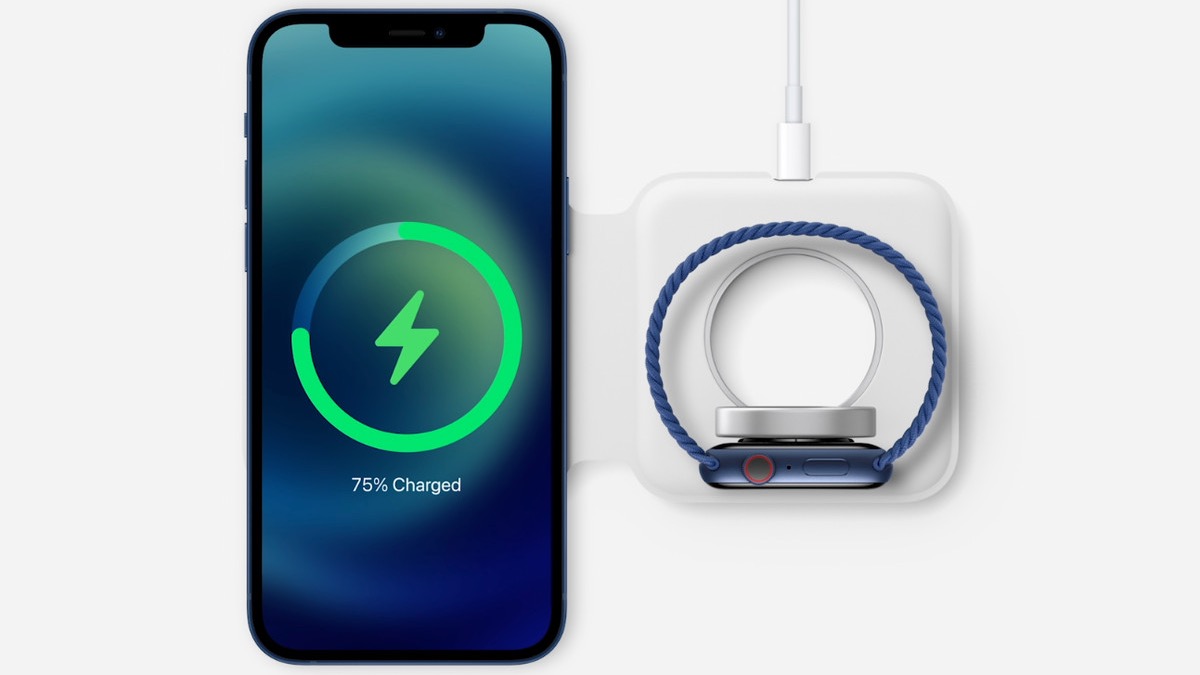Apple patents new magnetic connector and potential Lightning replacement
A new charging port for your iPhone and iPad

The U.S. Patent and Trademark Office has granted Apple a patent for magnetic connectors that could be used to charge iPhones and iPads, and replace its own Lightning port, Patently Apple reports.
The patent filing shows an accessory connector capable of exchanging power and data with a smartphone-like device.
The connector appears to be designed with water and dirt resistance in mind, using recessed contacts that attach magnetically to the electronic device port, similar to the MagSafe seen on older MacBooks.
Last year, the iPhone 12 saw the introduction of wireless MagSafe charging based on the Qi standard. The charging speeds were limited to a maximum of 15W, slower than the existing Lightning port at 20W. The new wired magnetic connector seen in the patents could potentially be aimed at accelerating charging speeds.
So does this mean the end of the line for the Lightning port? Probably, but not quite yet.
Although Apple has filed a patent, it doesn't mean the tech will see the light of day. This patent was granted on March 4th 2021 but was filed way back on April 10, 2018. As the iPhone 13 is rumoured to be keeping the Lightning connector, it seems unlikely we’ll be seeing a major change in charging protocol until at least 2022, which also happens to be the Lightning port's 10th anniversary.
The Lightning port was first introduced with the iPhone 5, replacing the original 30-pin connector used for charging every previous iPhone and iPod. It pushed the industry to adapt and develop new compatible products. Could we see history repeat itself with this new connector?
The latest hi-fi, home cinema and tech news, reviews, buying advice and deals, direct to your inbox.
The development of a potential new charging port comes just over a year after European Parliament members voted to introduce a single charging connection for all mobile phones.
Apple was staunchly against the ruling that threatened to force the company to replace the Lightning port and adopt a common charger.
At the time, Apple said: "Regulations that would drive conformity across the type of connector built into all smartphones freeze innovation rather than encourage it. Such proposals are bad for the environment and unnecessarily disruptive for customers.”
"We want to ensure that any new legislation will not result in the shipment of any unnecessary cables or external adaptors with every device, or render obsolete the devices and accessories used by many millions of Europeans and hundreds of millions of Apple customers worldwide." The discovery of this new patent puts a slightly different perspective on things, don't you think?
MORE
Read our iPhone 12 review
iPhone 13: release date, news and what to expect
Check out the best iPhone headphones
Mary is a staff writer at What Hi-Fi? and has over a decade of experience working as a sound engineer mixing live events, music and theatre. Her mixing credits include productions at The National Theatre and in the West End, as well as original musicals composed by Mark Knopfler, Tori Amos, Guy Chambers, Howard Goodall and Dan Gillespie Sells.
